Imagine cruising down a highway, the open road stretched out before you. Suddenly, a 55ot-tall green man dressed in a leafy toga suddenly appears on the horizon. Or perhaps it’s a house shaped like a giant shoe, a massive fiberglass igloo, or 4,000-pound bug. Across the United States, roadsides are sprinkled with attractions that are as odd as they are unforgettable. These weird, quirky and yet notable stops reflect local history, eccentric personalities, and an undeniable sense of creativity. From towering statues to bizarre museums, these are 50 of our favorite roadside attractions in the United States.
Alabama – The Unclaimed Baggage Center

Nestled in the small town of Scottsboro, Alabama, the Unclaimed Baggage Center is a treasure hunter’s dream come true. This massive 50,000-square-foot store is the only place in the US where unclaimed luggage from airlines and other transit sources is given a second life. From designer clothing and jewelry to sporting goods and electronics, the inventory is as varied as it is surprising. Beyond shopping, visitors can dive into the center’s unique story through behind-the-scenes tours and learn about the elaborate journey each item takes before finding a new owner. For the bargain-hunting traveler and the curious alike, this quirky stop offers a shopping experience unlike any other in the country.
Alaska – Igloo City

Igloo City, located just off the George Parks Highway, this abandoned four-story hotel shaped like a giant igloo was built in the 1970s with dreams of becoming a bustling tourist stop. However, due to construction code issues and the sheer harshness of Alaska’s weather, the project was never completed, and the oversized igloo was left empty in the wilderness. Although it’s not currently possible to enter the building (strictly off-limits for safety reasons), local investors did purchase the property recently, with plans to turn it into a distillery.
Arizona – The Thing

For miles alongside Interstate 10, cryptic billboards announce that “The Thing” is coming up. They proclaim it’s “The Mystery in the Desert” and ask, “What is It?” Located at Bowlin’s Travel Center near Dragoon, Arizona, The Thing is part of a larger kitschy roadside attraction that has intrigued passersby since the 1950s, filled with bizarre artifacts, historical oddities, and alien lore. It’s not until the final room The Thing, a mummy-like figure on display, is revealed. In recent years, the attraction underwent a revamp to include a more immersive storytelling experience, allowing visitors to delve deeper into its oddball narrative.
Arkansas – Thorncrown Chapel

Found in the Ozark Mountains near Eureka Springs, Arkansas, is Thorncrown Chapel, an architectural marvel designed by E. Fay Jones (an architect who once apprenticed for Frank Lloyd Wright) in 1980. There are no walls on this chapel, but it’s entirely enclosed — there are 425 separate windows sitting between the delicate wood framework, which covers over six thousand square feet of glass. Granted a National Historic Site in 2000, the church itself is 48 feet tall and can hold about 100 people, making it a popular venue for weddings and spiritual retreats.
California – Chandelier Drive-Thru Tree

This towering coast redwood tree stands about 276 feet tall and has a carved tunnel at its base, allowing cars to drive through its hollowed center. Estimated to be more than 2,000 years old, the tree gets its name from its branches, which resemble a chandelier as they split high up on the trunk. The tunnel was carved in the 1930s as a way to attract visitors, and today, it remains a symbol of the area’s connection to redwood forests. There are two other drive through trees on Highway 101, but this is the southernmost.
Colorado – Rita the Rock Planter

One of more than 120 sculptures created worldwide by Danish artist Thomas Dambo, Rita the Rock Planter lives in Victor, a mining town southwest of Colorado Springs. Made of scrap wood and branches, the 21-foot-tall troll isn’t just a whimsical sculpture—she also offers a message of conservation. In addition to being made from recycled materials, Rita appears to be repairing holes in the earth left by miners.
Connecticut – PEZ Visitor Center
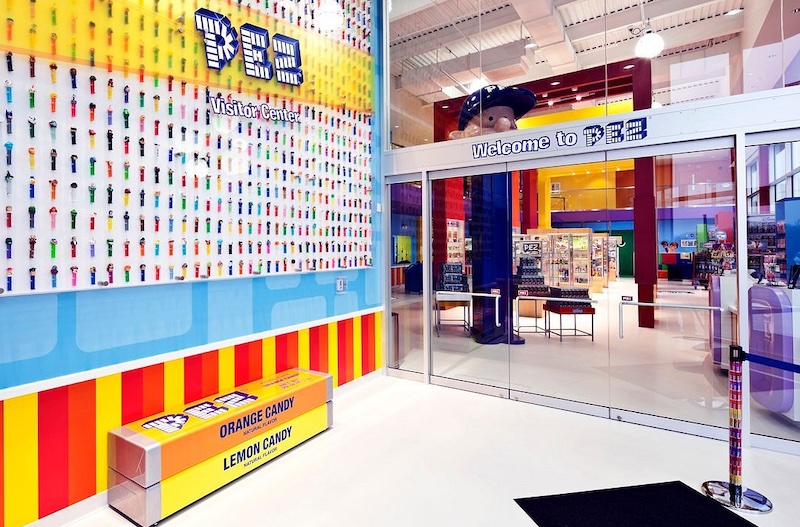
This candy-filled wonderland invites visitors into the colorful world of PEZ, showcasing an incredible display of vintage and themed PEZ dispensers, including rare and collectible characters. The center features a massive 3D dispenser, interactive exhibits, and historical displays chronicling PEZ’s evolution from its Austrian origins to its global status. Visitors can even create custom dispensers and stock up on limited-edition PEZ products, making it a memorable stop for candy lovers and nostalgia seekers.
Delaware – Futuro House
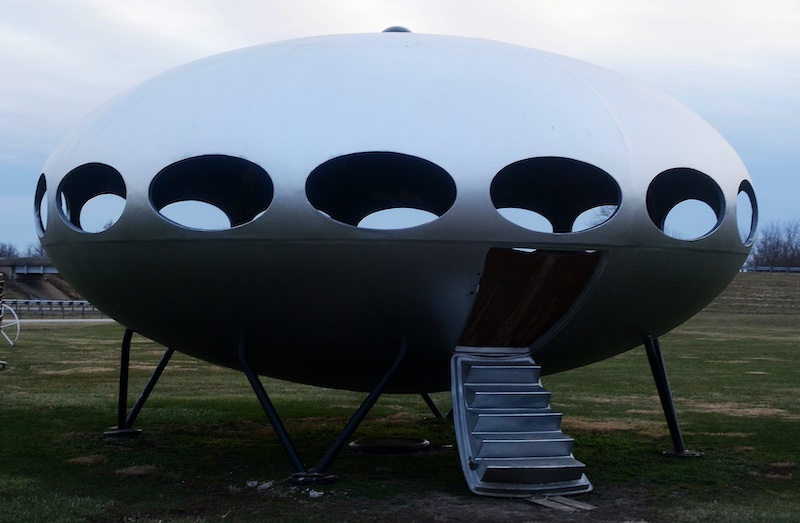
The Futuro House in Delaware is a funky UFO-shaped structure designed by Finnish architect Matti Suuronen in the late 1960s. Located in Milton at the end of the Eagle Crest Airport runway, this is one of the few surviving examples of the Futuro House (roughly 100 were built), a pre-fabricated, portable structure originally conceived as a ski cabin that could be easily transported and assembled.
Florida – World’s Smallest Post Office

This tiny post office, measuring just 8 feet 4 inches by 7 feet 3 inches, was originally a storage shed for irrigation pipes on a tomato farm. After a fire destroyed the Ochopee post office in 1953, this little shed was repurposed as a post office and has been serving locals and tourists (it’s particularly popular with stamp collectors who go to get one of the famed Ochopee postmarks) ever since. Despite its size, it operates like any other post office, offering mail services to residents in the area, including Miccosukee and Seminole Native American reservations.
Georgia – The Tree That Owns Itself
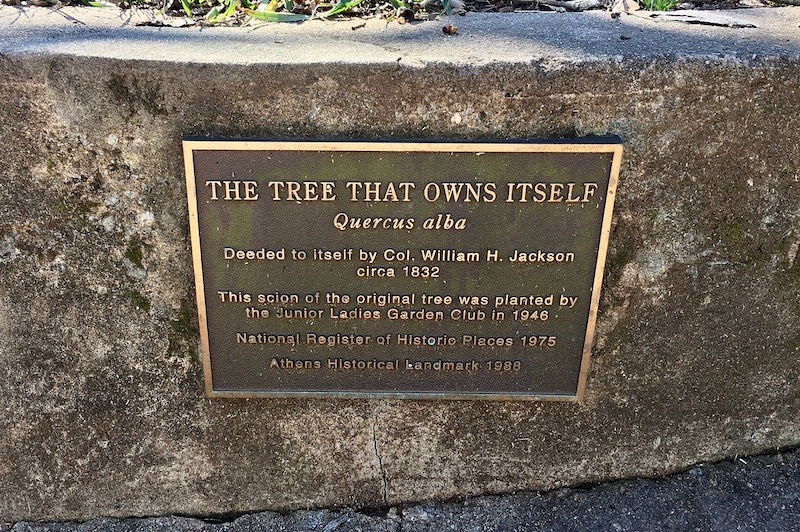
The “Tree That Owns Itself” is a famous white oak in Athens, Georgia, known for its unique history as possibly the only tree in the world to legally own itself and the land surrounding it. This unusual ownership is rooted in local folklore, dating back to the late 1800s when a man named Colonel William H. Jackson, who cherished the tree during his childhood, supposedly deeded the land to the tree itself to protect it from being cut down. While there is no official deed in government records, the people of Athens embraced the tale, and the city has informally respected the tree’s ownership ever since. Tragically, the original oak fell during a storm in 1942, but locals planted an acorn from the first tree in its place, allowing a successor, affectionately called “Son of the Tree That Owns Itself,” to carry on the legacy.
Hawaii – Pineapple Garden Maze
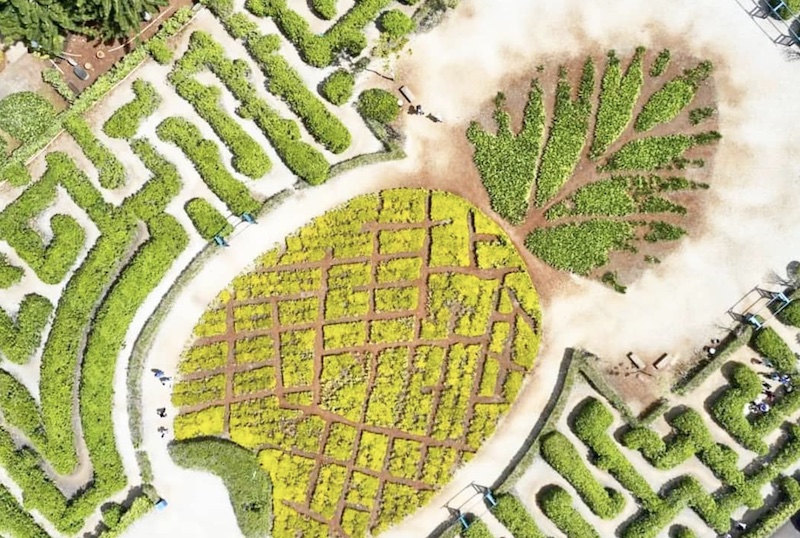
Located at the Dole Plantation on Oahu, Hawaii, this is one of the most intricate mazes in the world. It’s also the largest, having been recognized in the Guinness Book of World Records in 2008. Spread across three acres, the maze features more than 14,000 vibrant Hawaiian plants, including hibiscus, heliconia, and, of course, pineapples. Visitors explore the maze in search of eight stations hidden in the thatch, which contain a unique stencil to mark their completion. There’s no prize for completion, but the plantation also offers pineapple-themed souvenirs and fresh pineapple treats for purchase.
Idaho – Idaho Potato Hotel

This unusual hotel is exactly what it sounds like: a massive, hollowed-out structure shaped like an enormous potato. Originally created by the Idaho Potato Commission, the potato structure spent several years touring the country on the back of a flatbed truck as part of a promotional campaign. After it was retired from touring, local tiny-home builder Kristie Wolfe converted it into a one-of-a-kind hotel experience. Despite its rustic exterior, the interior is surprisingly modern and cozy. Inside, guests find a plush queen-sized bed, a small seating area, and even a bathroom with a small sink and toilet, though the shower is located in a separate retrofitted grain silo nearby. With its novelty, the Idaho Potato Hotel has become a spot for travelers who aren’t even overnighting there to experience the quirky side of Idaho’s agricultural pride.
Illinois – World’s Largest Catsup Bottle

Officially known as the World’s Largest Catsup Bottle, it’s actually a water tower built in 1949 for the G.S. Suppiger Company, bottlers of the popular Brooks Catsup. Towering at 170 feet tall, this structure resembles a giant bottle of ketchup and can hold up to 100,000 gallons of water. Designed in the shape of a Brooks Catsup bottle, it’s a colorful, nostalgic reminder of mid-20th-century advertising and industrial design.
Indiana – Martini-Drinking Pink Elephant

With his bubblegum pink hue, oversized black glasses, and a classic martini glass clasped in his trunk, the 12-foot-tall elephant in Fortville, Indiana, has become both a friendly greeter to those visiting Elite Beverages and a local landmark since the 1980s. Especially since the advent of social media, it has become a favorite stop for selfies, drawing people from all over who are eager to snap a shot with this one-of-a-kind, cocktail-loving colossus. The pachyderm is a humorous nod to the old phrase “seeing pink elephants”—an expression once linked to tipsy imaginations. Around various holidays, like Christmas and St. Patrick’s Day, locals will dress the elephant up in seasonal garb.
Iowa – Future Birthplace of Captain James T. Kirk

In the quiet town of Riverside, Iowa, fans of Star Trek will find a delightfully nerdy roadside gem: the Future Birthplace of Captain James T. Kirk. According to Star Trek lore, this community will be the birthplace of the iconic fictional Starfleet captain on March 22, 2228. Back in 1985, the town embraced this bit of sci-fi legend after a local Trekkie suggested it to the city council, which then designated a plaque for Captain Kirk, which attracts fans from all over.
Kansas – World’s Largest Collection of the World’s Smallest Versions of the World’s Largest Things

Founded by artist Erika Nelson, this mouthful of a museum offers a playful take on roadside attractions and cultural monuments by creating miniature replicas of famous “world’s largest” items—such as the world’s largest ball of twine, the largest ketchup bottle, and even the largest rocking chair. Each miniature is meticulously crafted by Nelson herself and often made directly at the site of its real-life counterpart. The collection serves as both a satire and homage, highlighting the bizarre yet endearing lengths people go to in order to claim a unique piece of fame, however specific it may be.
Kentucky – World’s Tallest Three Story Building

One interesting source of pride for people in Paris, Kentucky? The Shinner Building, on the corner of 8th and Main Streets in downtown, is recognized by Ripley’s Believe It or Not! as the world’s tallest three-story building. Among its tenants, the building has hosted law offices, retail shops, and a grocery store. It currently houses Paradise Cafe.
Louisiana – Abita Mystery House

This eclectic museum, housed in a former gas station, offers a bizarre and fascinating blend of folk art, antiques, and offbeat installations. Inside, visitors encounter over 50,000 found objects and artifacts displayed in eccentric ways, from old arcade machines and vintage memorabilia to strange dioramas featuring scenes like alien abductions, animal hybrids, and creatures from the bayou. Many of these installations are interactive, inviting guests to push buttons or turn cranks to bring them to life in weird and wonderful ways.
Maine – Wild Blueberry Land

Located in Columbia Falls, this seven-acre blueberry-themed park is hard to miss, with its giant blue dome resembling the state’s favorite fruit cut in half. Visitors can enjoy a round of mini-golf on a quirky course designed with blueberry-related obstacles, wander through gardens filled with blueberry bushes, and browse displays that tell the story of wild blueberry farming in Maine. Inside the indigo dome, the bakery is the main attraction, offering fresh blueberry pies, muffins, scones, and jams made from locally harvested berries. The gift shop sells blueberry-themed souvenirs, from soaps to syrup.
Maryland – Vanadu Art House
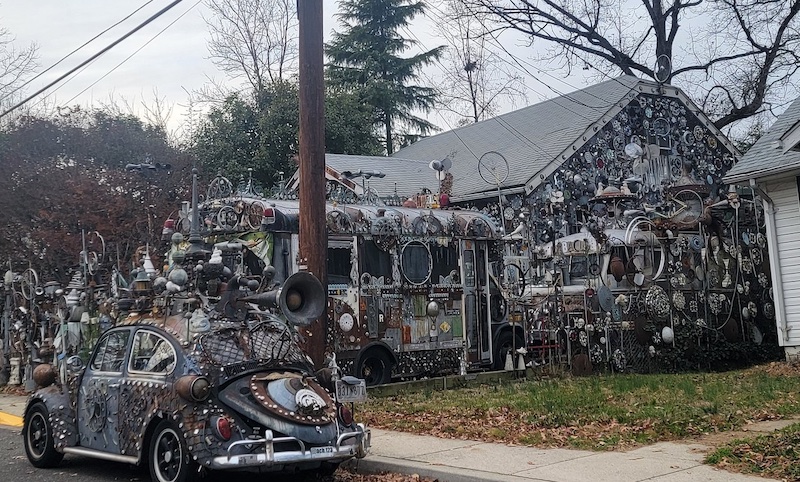
Often described as a folk art wonderland, the Vanadu Art House, located in Hyattsville, Maryland, is the creation of artist Clarke Bedford, who has spent years transforming his property into an interactive and immersive artwork. The house and yard are adorned with found objects, sculptures, and intricate metal work that blend elements of steampunk, surrealism, and Americana.
Massachusetts – The Paper House

Built in the early 1920s by mechanical engineer Elis F. Stenman, this appears to be an ordinary house at first glance, but it is anything but typical. Nearly the entire house is made of paper, including its walls, furniture, and even decorative elements. Stenman initially began constructing the Paper House as a summer retreat, and he used traditional building materials like wood for the frame, but then he had a novel idea: to use newspaper as insulation. Fascinated by the material’s potential, he expanded his concept and began to cover entire walls and even furniture (such as chairs, desks, and even a functioning fireplace) with layers of varnished newspaper, using as many as 100,000 newspapers to complete the project. Today, the Paper House is maintained as a museum where visitors can marvel at Stenman’s ingenuity and admire the preserved snippets of history embedded in its walls.
Michigan – Giant Uniroyal Tire
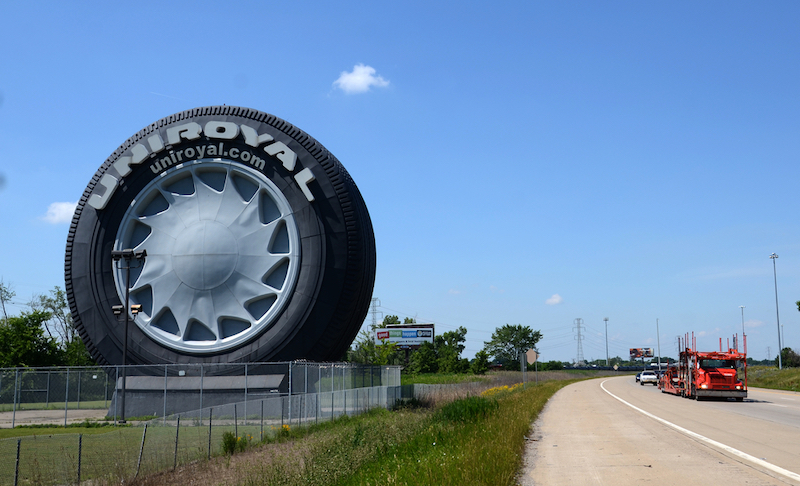
Architecture firm Shreve, Lamb and Harmon has two huge claims to fame: the Empire State Building and the Giant Uniroyal Tire. Standing at 80 feet tall and weighing approximately 12 tons, the Giant Uniroyal Tire was created as a Ferris wheel for the 1964-65 World’s Fair in New York. Able to hold 96 passengers, it hosted more than two million riders during its tenure. In 1966, it was relocated to Michigan (it had to be shipped by train in 188 sections) and reassembled outside the Uniroyal sales office, where it remains today.
Minnesota – Jolly Green Giant Statue

For nearly 100 years, the Jolly Green Giant has been the face of the Green Giant vegetable company. However, it’s only been a little over 50 years since his statue loomed large over the small town of Blue Earth, Minnesota. At 55.5 feet tall (or more than 60, if you include the elevated base he stands upon), the statue of a shamrock-colored man dressed in a leafy toga stands tall thanks to the efforts of a local radio station owner who was hoping to lure travelers to town. He hosted a segment called “Welcome Travelers,” wherein he’d interview people passing through town—a feature he feared would be harder to do when Interstate 90 was built, bypassing the community. The radio show is no more, but the Jolly Green Giant remains.
Mississippi – The Frog Farm

Featuring a collection of frog-themed folk art, The Frog Farm in Fayette, Mississippi, is a sculpture garden brought to life by the creative vision of self-taught artist Louise Cadney Coleman. Established in 1999, this one-acre attraction is filledwith life-sized wooden frogs painted in vivid colors, often depicted in distinctly human-like scenes—like playing instruments and sharing meals.
Missouri – BoatHenge
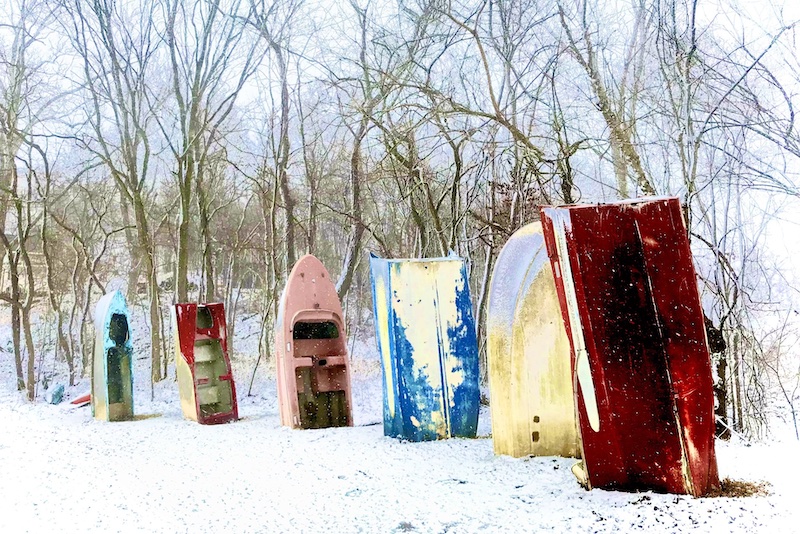
BoatHenge appeared mysteriously in 1993 along the Missouri River near Cooper’s Landing. The art installation features six fiberglass motorboats and a measurement that mirrors Stonehenge. Each boat is carefully placed on its bow, with the stern pointing upward, and tilted to achieve the look of a stone monolith. The boats are painted in faded colors, with some bearing graffiti or messages left by visitors over the years. It’s accessible from the river or from the Katy Trail.
Montana – Garden of One Thousand Buddhas

If you’re looking for a little enlightenment, you might consider visiting the Garden of One Thousand Buddhas, located in the Jocko Valley of Arlee, Montana. True to its name, the park features 1,000 identical hand-cast statues of the founder of Buddhism. They’re centered around a 10-acre wheel-like design based on Buddhist teachings that is meant to symbolizethe interconnectedness of all beings.
Nebraska – Klown Doll Museum

If clowns give you the creeps, this is one to skip as the Klown Doll Museum houses more than 7,000 clown figures curated from around the world. The museum is an homage to all things playful, zany, and, for some, nightmare-inducing. Opened in 2004, it showcases clowns of every type—from vintage porcelain dolls with elaborate costumes to colorful plush clowns. The Klown Doll Museum is more than just a quirky collection; it’s a journey through clown history and culture. Each doll seems to have a story, and the museum’s layout feels like a funhouse maze, leading you from cheerful clowns of yesteryear to more modern, eerie incarnations.
Nevada – International Car Forest

This sprawling outdoor art installation is home to more than 40 vintage vehicles – cars, trucks, and buses – partially buried nose-down or stacked in bizarre formations, each one splashed with vibrant graffiti and original artwork by various artists.The desert’s arid landscape contrasts starkly with the rainbow-colored vehicles, creating a visually stunning experience that captures the essence of Nevada’s outsider art scene.
New Hampshire – The USS Albacore

Originally an experimental submarine operated by the Navy, The USS Albacore was built to test and develop advanced hydrodynamic designs during the Cold War era. Unlike previous submarines, which were optimized for surface travel, the Albacore was specifically designed to operate primarily underwater, reflecting the shift in naval strategy toward submerged operations. And though she made significant contributions to submarine technology, after she was decommissioned in 1972, she was more or less dropped into a New Hampshire ditch, where she later became a museum.
New Mexico – International UFO Museum

The International UFO Museum & Research Center in Roswell, New Mexico, is for those of us curious about extraterrestrial life, UFO sightings, and the 1947 Roswell Incident. Founded in 1991, the museum offers a deep dive into the events and theories surrounding the infamous “crash” in Roswell, which ignited the world’s obsession with alien encounters. Inside, there are documents, newspaper clippings, and witness accounts that delve into conspiracy theories, government cover-ups, and possible sightings. Exhibits are both eerie and educational, with life-size models of aliens, re-creations of reported spacecraft, and historical artifacts that encourage visitors to question what they think they know.
New Jersey – Lucy the Elephant

Built in 1881, this six-story tall, wood and tin elephant was originally a marketing gimmick to attract real estate buyers. Over the first half of the 1900s, Lucy the Elephant served as a restaurant, a business office, a cottage, and a tavern. After falling into a state of disrepair, Lucy was slated for demolition in the 1960s but was kept alive by the Save Lucy Committee, who canvassed door-to-door to raise funds to move her. After five years of repairs, Lucy reopened and was named a National Historic Landmark by the National Park Service in 1976.
New York – World’s Largest Pancake Griddle

Built in 1987 by Birkett Mills, this enormous griddle measures 28 feet in diameter and weighs over 10 tons. It was originally created to cook a record-setting buckwheat pancake weighing 4,050 pounds. Preparing this colossal pancake required a cement truck to mix the batter and a crane to flip it. Once cooked, it was topped with 15 gallons of syrup and a 68-pound pat of butter, enough to feed 5,000 people. Today, this giant griddle is displayed on the outside wall of Birkett Mills in downtown Penn Yan, with an inscription from the Guinness Book of World Records noting its super-sized accomplishment.
North Carolina – The World’s Largest Chest of Drawers

Standing at an impressive 36 feet tall, this giant chest of drawers is painted in a classic wood grain finish and has two large, colorful socks hanging from one of its open drawers—a nod to High Point’s historical significance as a furniture manufacturing hub and “Home Furnishings Capital of the World.” Originally built in 1926, the dresser was initially much smaller but was remodeled in 1996 to its current towering height.
North Dakota – The Enchanted Highway

A unique blend of art, adventure, and American, this 32-mile stretch between Gladstone and Regent, North Dakota, is home to a series of enormous sculptures, each designed and crafted by local artist Gary Greff. His vision transformed this route into an outdoor gallery featuring nine whimsical, larger-than-life metal creations. Each piece tells its own story, often inspired by North Dakota’s natural landscape and cultural heritage. The journey begins with “Geese in Flight,” which, standing at 110 feet tall and 154 feet wide, holds the title of the world’s largest scrap metal sculpture. Other artworks include “Deer Crossing,” featuring two towering deer in mid-leap, and “Grasshoppers in the Field,” a nod to the farming roots of the region. Further along, “Fisherman’s Dream” captures an underwater scene with massive fish and a fisherman casting his line, while “Teddy Rides Again” celebrates Theodore Roosevelt on horseback, honoring his legacy in North Dakota. Each sculpture is set up with pull-off areas so visitors can stop, take photos, and admire the scale and craftsmanship up close.
Ohio – World’s Largest Bobblehead
Jacques is a 35-foot-tall French chef. The mustachioed culinary artist always wears a red jacket, white pants, and a chef’s hat and is always holding two cheeseburgers. He’s made of fiberglass and is billed as the “World’s Largest Bobblehead.” He’s noggin wasn’t always nodding, though. When he was constructed in the 1960s as a mascot for a local restaurant, his head was attached firmly to his shoulders. However, when the 1970s the restaurant closed, he was taken down and neglected for roughly half a century. When a local manufacturer, Terry Byrne, acquired Jacques to restore him, his head was off, inspiring the decision to give him a bobblehead. Byrne worked with an engineer to design a one-of-a-kind custom spring that could support his massive head. He now lives at the Buckeye Express Diner at 810 OH-97 in Bellville, just outside Mansfield.
Oklahoma – Winganon Space Capsule

The story of how the Winganon Space Capsule came to be involved a cement mixer falling off a truck in 1959. It was too heavy to move, so it was simply left on the roadside along Oklahoma State Highway 33. Over the years, locals got creative, transforming the cement mixer into what looks like a space capsule. It’s painted with NASA-style designs, complete with an American flag and faux technical details, making it resemble an abandoned or crash-landed spacecraft.
Oregon – Mill Ends Park

Mill Ends Park, located in Portland, Oregon, holds the title of the world’s smallest park. Measuring just 452 square inches (about 0.29 square meters), this tiny green space is situated in the median of SW Naito Parkway, near the Willamette River waterfront. The park was established in 1948 by local journalist Dick Fagan, when he noticed an empty hole near his office window. Instead of leaving it vacant, he filled it with plants and named it Mill Ends Park, declaring it the only leprechaun colony west of Ireland. Over the years, it became an official city park and gained a cult following, with locals occasionally adding small decorations, miniature installations, and even hosting tiny events.
Pennsylvania – The Haines Shoe House

Built in 1948 by shoe salesman Mahlon Haines, this five-story sneaker-shaped house was his idea of the ultimate marketing stunt. This quirky home stands at around 25 feet tall and 58 feet long, with each part of the shoe serving as a different room: the toe houses a cozy living room, the heel has a kitchen, and the ankle hides two bedrooms. Now open for public tours, it’s a fun throwback to a time when ads weren’t just billboards.
Rhode Island – The Big Blue Bug

Affectionately known as “Nibbles Woodaway,” this massive termite measures 58 feet long and weighs 4,000 pounds. It’s 928 times the size of a real Eastern Subterranean Termite; the steel and fiberglass bug was created in 1980 to be a unique advertising mascot for a pest removal company. Over the years, Nibbles has been dressed in various outfits to celebrate holidays and events, including a Santa hat and blinking red nose during Christmas and Red Sox gear during baseball season.
South Carolina – South of the Border

South of the Border is a sprawling, retro-themed roadside attraction just past the North Carolina-South Carolina line on I-95, blending amusement park quirks with a roadside rest stop’s essentials. Born in 1949, this oddball landmark started as a small beer stand, but over the years, it ballooned into a full-blown spectacle with offbeat motels, neon-lit themed restaurants, mini-golf, a reptile lagoon, and dozens of brightly colored statues of animals. You’ll also find every imaginable souvenir shop, from those hawking Mexican blankets to bizarre bobbleheads.
South Dakota – The World’s Only Corn Palace

Since 1892, corn has taken center stage at this massive building that looks like a cross between a medieval castle and the world’s most over-the-top grain silo. Each year, artists turn the Corn Palace into a grandiose mosaic, using over 275,000 ears of corn in different colors to create jaw-dropping murals celebrating everything from local history to nature. Inside, the palace doubles as a community hub, hosting basketball games, concerts, and even proms.
Tennessee – Backyard Terrors Dinosaur Park

Created by local artist Chris Kastner, this six-acre park is home to a variety of dinosaurs crafted with meticulous detail. As guests stroll along winding trails, they encounter over 70 dinosaur models, each accompanied by informational signs describing the species, habitat, and history. The park, originally a backyard project, has grown into a community treasure and relies on donations to maintain and expand its exhibits.
Texas – Barney Smith’s Toilet Seat Art Museum

Located in San Antonio, Texas, this toilet seat-themed museum was the brainchild of Barney Smith, a retired master plumber with an eye for creativity and a penchant for the unconventional. Over the course of several decades, he turned more than 1,000 discarded toilet seats into canvases for his eclectic art, each seat showcasing a different theme, story, or collection of found objects.
Utah – Hole N” The Rock

Long before you reach the Hole N” The Rock, you’ll start seeing signs for it. And they are vague signs, offering little to no detail about what the Hole N” The Rock actually is. If you do visit, however, you’ll find that it’s a 5,000-square-foot home carved directly into the sandstone. Created by Albert and Gladys Christensen over a span of 20 years, beginning in the 1940s, the 14-room residence still holds original furnishings and artwork, showcasing the Christensens’ creativity and dedication to their unusual vision. Today, guests can take guided tours of the interior to see Albert’s workshop, Gladys’ art collection, and other eclectic decorations. The property also features a gift shop and a petting zoo.
Vermont – Ben & Jerry’s Flavor Graveyard
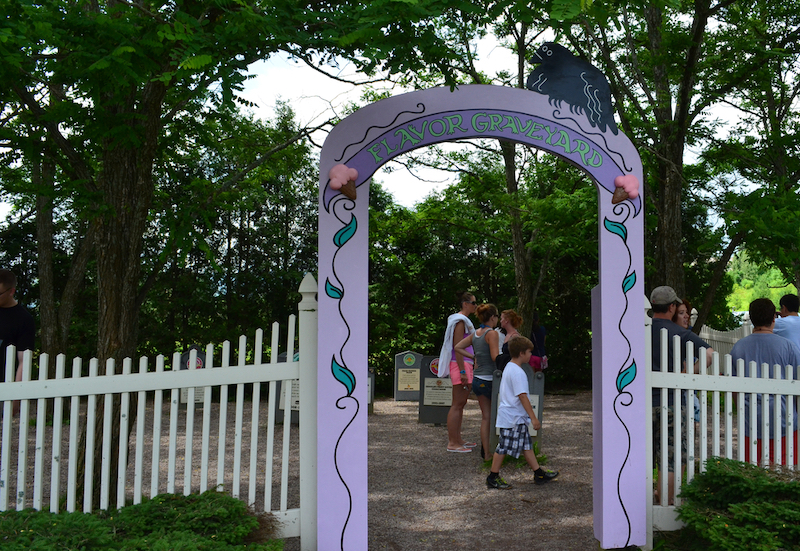
Here lies all of Ben & Jerry’s discontinued flavors. This mock graveyard features tombstones for each “dearly depinted” flavor, complete with witty epitaphs that tell the story of why the flavor was retired or recall its unique ingredients. Flavors like “Wavy Gravy” (featuring caramel cashew Brazil nut ice cream with chocolate hazelnut fudge swirl and roasted almonds) and “Fossil Fuel” (with a sweet cream ice cream base and swirled with chocolate cookie pieces and fudge dinosaurs) have found their final resting places here, honoring fan-favorites that, for one reason or another, didn’t make the cut.
Virginia – Hugh Mongous

Hugh Mongous is a towering figure, both physically and in personality. Built in June 1977 by University of Richmond professor Demetrius Mavoudis, the bright Hawaiian shirt and swim trunks-wearing gorillas stand 45 feet tall and weigh roughly 11,000 pounds. Originally commissioned for a promotion at a local bank, he was later relocated to the front of the Jungle Falls (now known as Ocean Breeze Waterpark). This Hugh is actually the second of his kind—the original was lost in a fire in 1989 and had to be remade. Hugh Number Two was unveiled in 1996.
Washington – Big Red Wagon

The Big Red Wagon, also called “The Childhood Express,” has been a landmark in Spokane’s Riverfront Park since 1990. Created by local artist Ken Spiering, this giant replica of a Radio Flyer wagon is 12 feet tall and stretches 27 feet long. It is made of steel and concrete and weighs a hefty 26 tons. And while most art pieces aren’t meant for climbing on, this is one of the rare exceptions—the handle of the oversized wagon is a slide big enough for kids and adults to go down.
West Virginia – World’s Largest Teapot

Originally built in 1938, this roadside attraction began as a simple 12-foot barrel for a root beer stand. However, it was later converted into a teapot by adding a spout, handle, and a broad, rounded lid. Standing 14 feet tall and 14 feet wide, the teapot was intended to promote the local ceramics industry, as Chester and the surrounding Ohio Valley region were once famous for their pottery production. Despite falling into disrepair at various points over the decades, the teapot was repeatedly restored by passionate local residents who saw its importance as a cultural landmark.
Wisconsin – Al Johnson’s Goats On the Roof
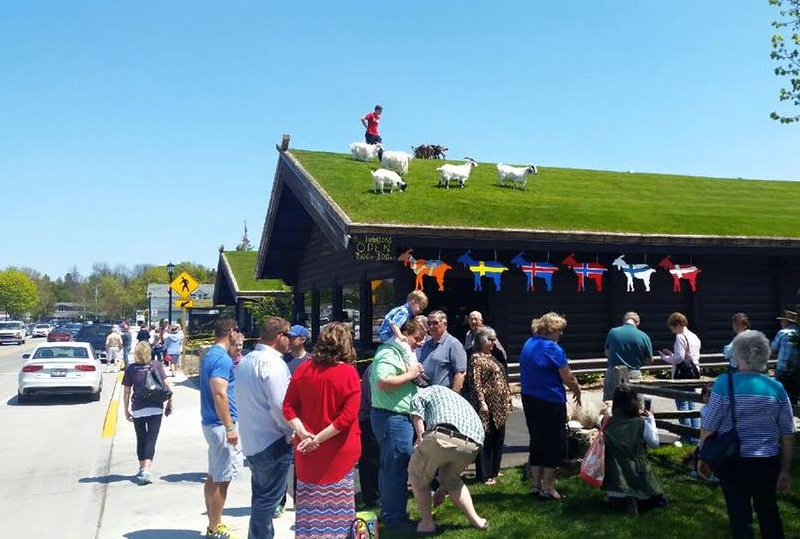
Al Johnson’s Swedish Restaurant in Door County, Wisconsin, is famous for two things: their Swedish pancakes topped with lingonberries and the goats that live on the restaurant’s grass-covered roof. The story goes that Johnson’s friend Wink Larson put a goat named Oscar on the restaurant’s roof as part of a birthday gag one year and a tradition was born. Now four or five goats graze on the sod during daylight hours in the summer (usually sometime in late May until mid-October) before returning to the farm at night.
Wyoming – World’s Largest Elkhorn Arch

Wyoming has an abundant elk population. Want proof? Check out the World’s Largest Elkhorn Arch in downtown Afton, Wyoming. Made from more than 3,000 naturally shed elk antlers collected from the surrounding area by local residents, hunters, and outdoor enthusiasts and weighing over 15 tons, this massive arch spans across a four-lane road.




